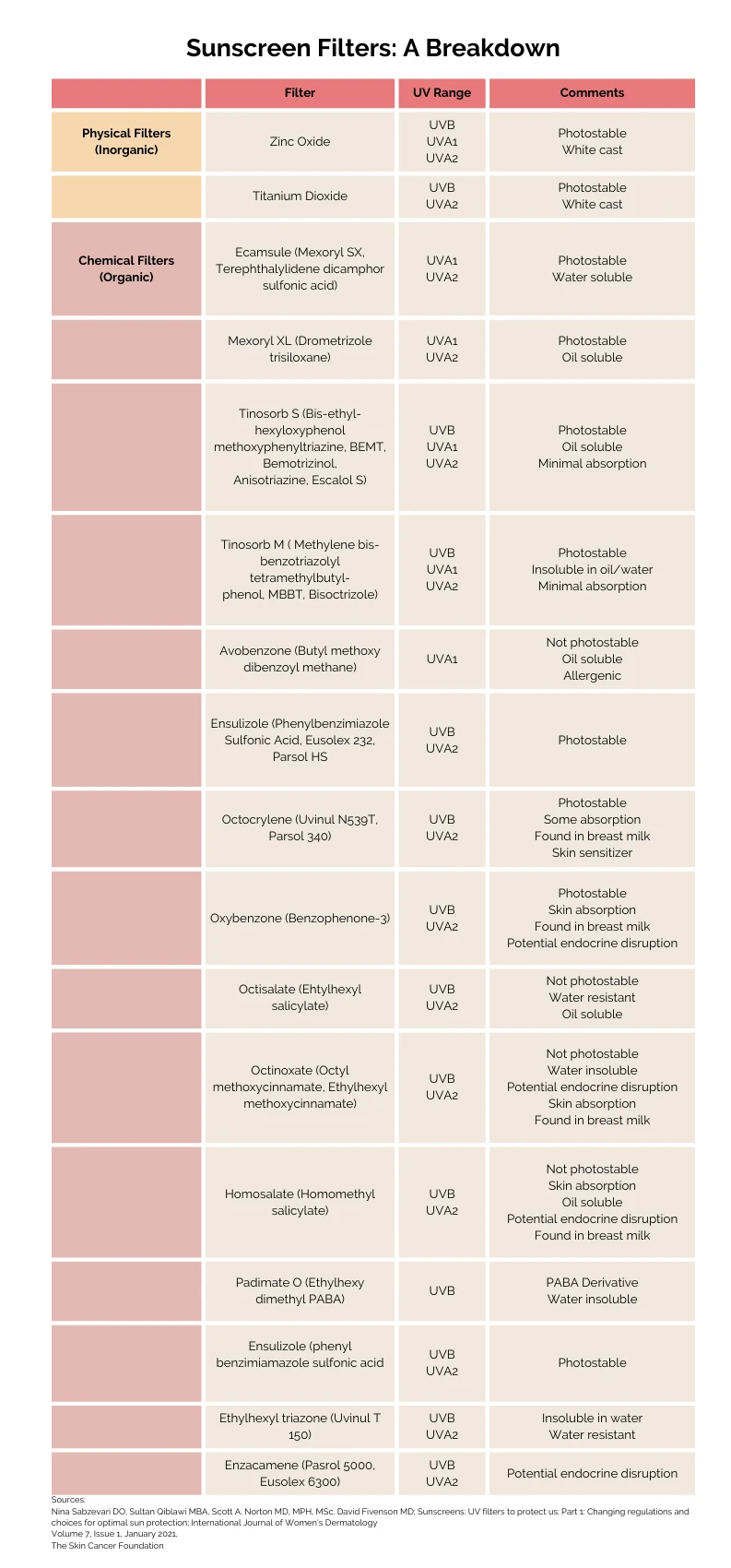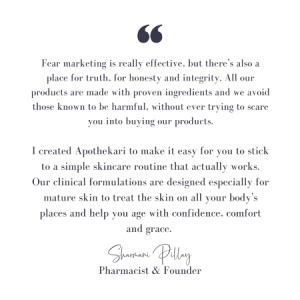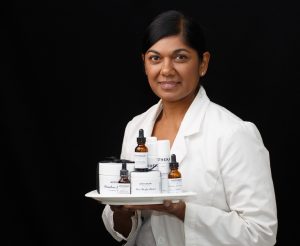These days, most of us are becoming increasingly concerned about what we put on our skin. So, it’s no surprise that when the sun is shining brightly, we seek the safest sunscreen possible.
Is There a Sunscreen That Isn’t Bad for You?
There’s a lot of information circulating about the potential dangers of sunscreens and their alleged link to skin cancer. However, it’s important to acknowledge that there is very little to no evidence linking sunscreen use with developing skin cancer, despite what the fear mongers perpetuate online.
What is the Safest Kind of Sunscreen to Use?
In fact, medical health professionals, including trusted organizations such as, The Canadian Dermatology Association, The American Academy of Dermatology, The Skin Cancer Foundation, The Center for Disease Control and Prevention and the World Health Organization, all recommend sunscreen and sun protection as the number one defense against developing skin cancer. The safest sunscreen is one that protects your skin against damaging ultraviolet light and that you will use all the time!
In this post, let’s dive deeper into what’s available today to help you find the best fit for your needs.
Which Sunscreen is Better Chemical or Mineral?
Sunscreen filters are generally categorized into two main types: physical/mineral filters (inorganic) and chemical (organic) filters. There are only two physical blocking filters—zinc oxide and titanium dioxide. Everything else is a chemical filter.
Both types are effective, and you’ll often find both a physical and a chemical filter in a sunscreen formulation, which can be a way to get the best of both worlds.
- Chemical filters interact with our skin’s surface, absorbing UV rays and converting them into harmless energy.
- Physical filters on the other hand, sit on top of the skin. They also and work by absorbing UV rays and converting them into harmless energy blocking. However, they have the additional action of being able to block or deflect UV rays.
As a result, physical blocking sunscreens may feel thicker in texture compared to chemical blocking ones, due to their different mechanisms of action.
We’ve posted before about sunscreen ingredients and hope that the chart below helps as well.
Which is the Best Chemical Free Sunscreen?
Everything is a chemical so it’s impossible to answer this question (even though it gets asked quite a lot!).
If you’re worried about the impact of your personal care products on your health, be assured that cosmetics, including sunscreens—which are regulated as drugs in some countries—are overseen by government bodies to ensure their safety and effectiveness.
If you want a sunscreen with minimal absorption, check out our chart below for sun filters that fit the criteria, which include not only physical blocking zinc oxide and titanium dioxide but many other chemical filters as well.
What is the Safest SPF for Sunscreen?
Whether physical or chemical, sunscreens need to protect against two types of UV rays:
- UVA rays, which are the longer penetrating rays that contribute to skin aging
- UVB rays, which are responsible for sunburns.
SPF (Sun Protection Factor) is only an indication of UVB protection and most skincare professionals recommend a minimum of SPF 30 for adequate protection. There isn’t a universally recognized rating for UVA protection, and you’ll find several different criteria, depending on where you live:
- Broad Spectrum (Canada/USA)
- UVA-PF (Europe/UK)
- PA/PPD (Japan/Korea)
What does matter is that you choose a sunscreen that protects against both types of UV rays.
What is the Healthiest Safest Sunscreen?
The healthiest safest sunscreen is one that has been produced in a lab with appropriate testing before it’s sold to you.
Regardless of the ingredients they contain, sunscreens are regulated by bodies including Health Canada and The FDA. They must go through rigorous testing to ensure that they provide adequate protection.
Different regulations exist in other countries, but the advice is to stick with reputable brands. Creating an effective sunscreen is a very complicated process. You can’t just slap some zinc oxide into coconut oil and call it a day. Don’t listen to anyone who tells you it’s safe to do that either!
What Sunscreen is Safe for Face?
Whether for face or body, buying your sunscreen from a trustworthy brand, helps to guarantee its safety.
And while there’s little to no difference in terms of the protection between sunscreen for your face and sunscreen for your body, you may find that sunscreens made for the face are more pleasant to use—less greasy, less white cast, etc. That’s not always the case, but that’s been my experience.
What Ingredient to Avoid in Face Sunscreen?
There aren’t any specific sunscreen filters you must avoid when it comes to choosing a face sunscreen. It all really comes down to personal preference and your skin’s needs:
- Avoid ingredients that you are allergic or sensitive to
- Stay away from fragrances that you find overwhelming or that irritate your skin
- Love the formulation. If you don’t, you won’t be using it!
What Sunscreen is Best for Coral Reefs?
If you’re worried about the damage that your scuba or snorkelling adventure may be inflicting upon coral reefs, you’re not alone.
Alarming headlines suggest that sunscreen, and in particular, two filters—oxybenzone and octinoxate—are harming our reefs.
What you need to know is that most of this research looking at the harmful effects of sunscreen ingredients on coral reefs and other aquatic organisms has been done in a lab, and lab studies can tell only part of the story. (You can read more here).
Most scientists maintain that sunscreen ingredients aren’t the sole cause of the harm to coral reefs, they are only one part of a larger issue. There are lots of other stressors on coral reefs, including rising sea surface temperature; sewage and wastewater entering the ocean; and human impact.
A 2021 review, published in the journal Environmental Toxicology and Chemistry, analyzed data from 12 studies of sunscreen ingredients and their effect on coral. The researchers concluded that while there’s ample proof that UV filters are found in ocean waters, there’s limited evidence that their presence is causing significant harm to coral reefs.
More studies to evaluate the toxicity of sunscreen ingredients in real-world settings are needed.
What Kind of Sunscreen is Reef Safe?
Despite what the marketing labels may indicate, there’s no standard or regulated meaning behind “reef safe” or “reef friendly.”
Some sunscreens with those claims avoid oxybenzone or octinoxate. Others include only minerals (titanium dioxide and zinc oxide) or contain a mix of mineral and chemical ingredients. The definition of is really up to whoever sells the formulation. Plus, we don’t know if products labeled ‘reef safe’ really are better for the environment or not.
In fact, while many “reef safe” sunscreens contain only mineral ingredients, a 2014 study found that titanium dioxide in the water produced hydrogen peroxide, a chemical that’s harmful to marine organisms.
How Can I Maximize My Sun Protection?
While using sunscreen is absolutely important, it’s also important to be smart in the sun:
- Cover up with sunglasses, long sleeves
- Seek shade
- Avoid sun during peak hours of 10 am – 4 pm.
- Include antioxidants like Glow Getter in your skincare routine. Antioxidants play a crucial role in protecting the skin from the damaging effects of free radicals, which are unstable molecules that can cause cellular damage and contribute to premature aging. By incorporating antioxidants into your sunscreen, you can enhance the overall protection it provides.
Stay safe and enjoy the sun responsibly!








